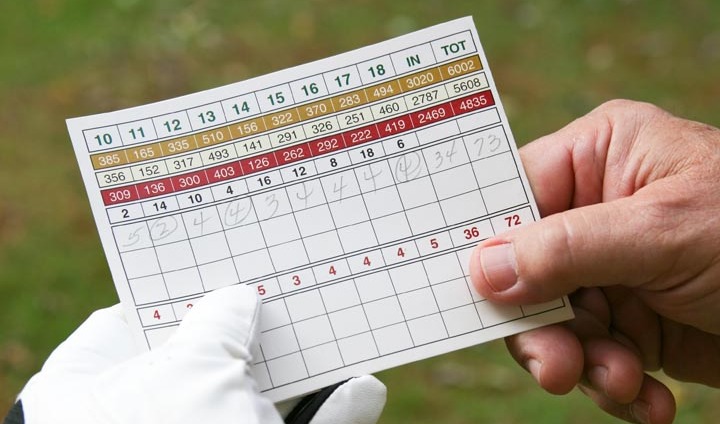The danger of focusing too hard on a single golf shot is that it can create stress and anxiety in the body and mind. This in-turn can and does impact on making a free-flowing golf swing, which creates tension in the muscles and therefore un-forced errors and inconsistency.
There are basically two types of focus – Foveal and Peripheral vision.
Foveal Vision is where you focus and concentrate hard on one particular thing. In golf this is okay for each shot for just a few seconds, but the danger is that it can create stress and anxiety. You’ve heard the old saying "that you can’t see the wood from the trees"! You also may not take in all the right information if your focus is for example just on the pin placement. Subtle borrows may mean that the best place to put the ball is above or either to the left or right of the hole or beneath it - or you can just get sucked it and blind-side yourself!
Peripheral Vision is where you have a soft gaze at an area of interest by using both sides of the brain. In golf that could be the whole green, trees and bunkers surrounding it and the subtle borrows. Emergency drivers (police, ambulance, paramedics and fire and rescue personnel) are trained in using peripheral vision while driving under the ‘blues and twos’ to be able to see what’s in front, to both sides and behind them, so that they can take evasive action. And just as importantly be able to handle the vehicle and any situation that crops up calmly and in control. In between and when approaching each shot it is best to observe the whole area as you approach your shot so that you see all the important things that may have an impact on where the ball finishes up.
You may have seen the 3D illusions that shows a complete diverse picture – say peanuts, and when viewed in peripheral vision shows a 3D elephant! A company called Magic Eye (https://www.magiceye.com) produce a number of books and other media, which are used for fun, improving vision therapy and whole-mind practices like accelerated learning, speed reading as well as reducing stress and enabling a more relaxed state.
So how do we balance the two types of focus when playing around of golf and in particular a single shot?
Firstly, before you enter the ‘Strategy Box’ use the peripheral vison technique to take in that wider view in front of you in a calm and relaxed manor. As you step into the ‘Strategy Box’ then use the foveal vision and focus on the important element (i.e. club selection, line, high raking draw and rollout etc.) so that you can make the right decisions. Then as you step across the imaginary dividing line into the shot box remember to breathe deeply and exhale as you step into the ‘Execution Box’, change to a soft gaze peripheral vison to be calm and quieting mind. As you execute the shot you should then be free of any undue stress and anxiety and make a fluid and free-flowing swing to get the desired result.
To practice going into peripheral vision either use 3D pictures (see above) or just gaze softly at a spot on the wall in front of you or the little camera on your computer monitor and breathe easy. Keep your head still at all times and blink naturally. Continue looking at the spot, breathe easy and keeping your head still, gradually open up your gaze to see the whole wall in front of you, then each side wall and above and below you - you will be amazed at how much you can see. Do this for five minutes at first and notice what you see, hear, feel and notice as you enter and maintain peripheral vision. Once you’ve gained the skill to go into peripheral vison indoors then take it out on the driving range and then the golf course. With practice you’ll begin to notice that you’re taking in all the right information to make the right decisions and be able to execute a free-flowing golf shot – JFDI.
Once again, these small actions if done regularly will begin to have a major impact on your game and boost your self-belief and confidence. In principle its Kaizen or the aggregation of marginal gains! In the excellent book by Cranfield, Hansen and Hewitt – “The Power of Focus” the quote ‘the road to confidence is paved with weekly victories’ which clearly highlights there is no quick fix just lots of practice of little tasks regularly! And remember these little techniques are easy to do and easy not to do, so take a leaf out of Jeff Olsen’s book “The Slight Edge”.
Hopefully, you're beginning to find these My Golf Mind blog posts of interest and have started getting you thinking about the importance of the mind game? So why not share them with your golfing buddies, ok.
Do give My Golf Mind a call on 07973 614969 or fill out the form below if you have any questions or challenge what I've said, and until next week.
Keep it on the fairway ...
Keith Haynes
Northamptonshire’s first and only Master Mind Factor Coach
PS ... My Golf Mind delivers a two-hour 'spring clean your mind; spring clean your game' seminar if you or your golf club are interested! Get in touch now ...



